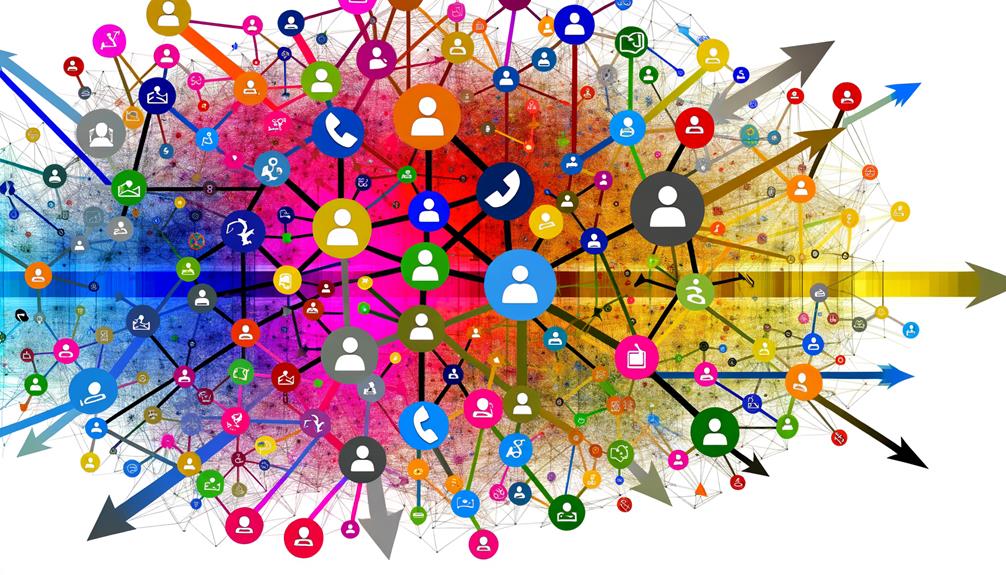Imagine the world as a bustling metropolis, each individual a unique resident contributing to its vibrancy. But just how many inhabitants call this global city home?
From the historical perspective to current world population figures, the intricacies of global population dynamics are vast and intriguing. Delving deeper into factors influencing population growth, understanding global population trends is not just about numbers but also about the implications it holds for our shared future.
Historical perspective on global population
Examining the historical trends of global population growth reveals significant shifts in demographics over the centuries. In ancient times, the world’s population was much smaller compared to today. As societies evolved, advancements in agriculture, medicine, and technology led to population booms in various regions. The Industrial Revolution further accelerated population growth, as urbanization and improved living conditions became more prevalent.
During the 20th century, the global population saw unprecedented growth, with the number of people doubling in just 50 years. This rapid increase was influenced by factors such as improved healthcare, sanitation, and access to food. However, as we entered the 21st century, birth rates began to decline in many parts of the world, leading to concerns about aging populations and declining fertility rates in some regions.
Understanding the historical context of global population growth is essential for comprehending the challenges and opportunities we face today. By learning from the past, we can better prepare for the future and address the complex issues related to population dynamics on a global scale.
Current world population figures
The current global population figures reveal the dynamic nature of human demographics in the contemporary world. As of now, the world’s population stands at approximately 7.9 billion individuals and continues to grow steadily. Below is a breakdown of the current population by continent, showcasing the distribution of people across the globe:
| Continent | Population (in billions) |
|---|---|
| Asia | 4.6 |
| Africa | 1.3 |
| Europe | 0.7 |
| Americas | 1.2 |
These numbers highlight the significant population concentration in Asia, followed by Africa and the Americas. Understanding these figures is crucial for various fields such as urban planning, resource allocation, and sustainable development. The global population is not only expanding but also shifting geographically, impacting social, economic, and environmental dynamics worldwide. By acknowledging these current population figures, we can better prepare for the challenges and opportunities that come with a growing and evolving global population.
Factors influencing population growth
To understand the dynamics of population growth, consider the various factors that influence this global phenomenon. Population growth is primarily influenced by birth rates, death rates, migration patterns, economic conditions, education levels, healthcare access, and cultural beliefs.
High birth rates can lead to rapid population growth, while low death rates contribute to sustained increases. Migration plays a significant role in altering population numbers, as individuals move between countries seeking better opportunities or fleeing from hardships.
Economic conditions impact population growth by influencing family planning choices and access to resources. Higher education levels often correlate with lower birth rates as individuals prioritize career advancement and personal development. Improved healthcare access can lead to lower mortality rates and longer life expectancies, contributing to population growth.
Cultural beliefs and practices also play a crucial role in shaping population trends, affecting attitudes towards family size and gender roles. Understanding these factors is essential in predicting and managing future population growth trends on a global scale.
Global population distribution trends
Explore the shifting patterns of where people live across the globe with a focus on global population distribution trends. Currently, the world’s population is distributed unevenly, with some regions densely populated while others remain sparsely inhabited. Asia stands out as the most populous continent, home to over half of the global population. Within Asia, countries like China and India have massive populations concentrated in urban centers. In contrast, Africa, despite being the second most populous continent, has vast areas with low population density due to factors like desertification and limited infrastructure.
Europe boasts a relatively even distribution of people across its countries, with some nations experiencing population decline due to low birth rates. The Americas, including North and South America, have diverse population distributions influenced by economic factors and historical trends. Oceania, comprising Australia and neighboring islands, has a small but steadily growing population, primarily clustered around coastal areas.
Understanding these global population distribution trends is crucial for policymakers and urban planners to address challenges related to resource allocation, infrastructure development, and demographic shifts.
Implications of population growth
Shifting global population distribution trends highlight the need to consider the implications of continued population growth on various societal aspects. As the world’s population continues to increase, several key areas are impacted. One significant implication is the strain on available resources such as food, water, and energy. With more people to support, ensuring sustainable access to these resources becomes a pressing concern.
Moreover, population growth also affects infrastructure and urban planning. As cities expand to accommodate more inhabitants, issues like traffic congestion, housing shortages, and waste management become more challenging to address. Adequate investments in infrastructure are crucial to support the growing population.
Socially, a larger population can lead to increased competition for jobs and educational opportunities. It also puts pressure on healthcare systems to provide quality services to a larger number of individuals. Additionally, environmental concerns such as pollution and deforestation are exacerbated with a rising population.
Understanding the implications of population growth is essential for policymakers to make informed decisions that promote sustainable development and improve the quality of life for all individuals.
Conclusion
So, now you know just how many people are sharing this planet with you. It’s quite a crowd, isn’t it? But don’t worry, there’s always room for more. Just remember, with great numbers comes great responsibility. Take care of each other, be mindful of our resources, and work towards a sustainable future for all.
After all, the more, the merrier, right?









